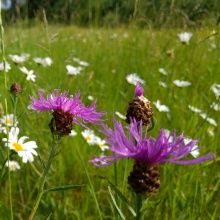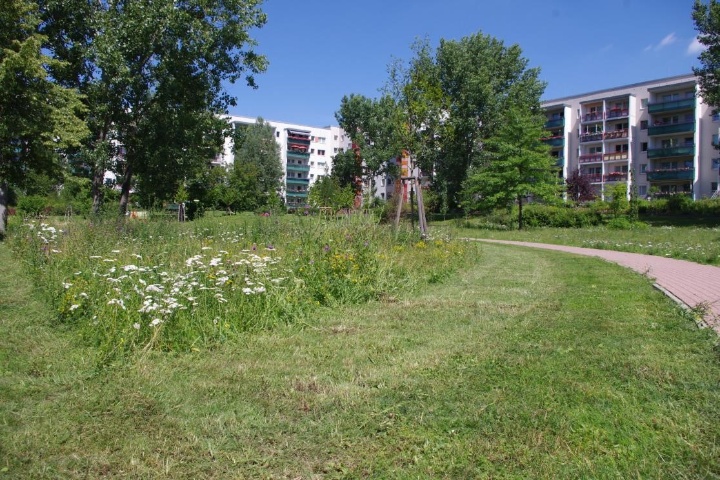Greenspaces in our cities are increasingly left as meadows in order to enhance biodiversity. But time and again, residents complain that near-natural urban greenspaces appear “untidy” and limit leisure activities, or they fear ticks or allergies. A research team led by Prof. Leonie Fischer from the University of Stuttgart, Dr. Lena Neuenkamp from the University of Bern, and Dr. Valentin Klaus from the ETH Zurich has now conducted a Europe-wide study to examine what can be done to increase the acceptance of biodiversity-friendly maintenance measures.
Increasing global urbanization on the one hand and species extinction on the other make it necessary to enhance biodiversity in cities as well. For this reason, parks, gardens, playgrounds, and cemeteries are often designed to provide an alternative to the dwindling natural habitats for wildlife and plants. However, local approaches that support nature in the city must be planned and managed in a way that the people in the city can understand and accept them.
In order to find out what the population thinks about the nature-friendly maintenance of public greenspaces and how “nature in the city” can work, the research group interviewed more than 2,000 study participants in 19 European cities. For the study, the scientists juxtaposed mowed lawns, which usually provide a habitat for only very few species of flora and fauna, with tall-growing, near-natural meadows. Although the latter are home to a significantly higher number of species and therefore enable exciting observations of nature, they are not suitable for leisure activities such as ball games or sunbathing and appear rather unkempt, especially in increasingly dry conditions.
“Across Europe, the majority of the urban population is in favor of facilitating urban biodiversity, especially if this is done in line with a generally ‘tidy’ and orderly appearance of public greenspaces,” says Prof. Leonie Fischer from the Institute of Landscape Planning and Ecology at the University of Stuttgart, summarizing the results of the study. “As soon as greenspaces look unkempt and dry, consent declines.” Younger people in particular and those who use greenspaces for a variety of different activities are in favor of a biodiversity-friendly maintenance of the areas.
Combining natural and classic elements
The study encourages urban planners inside and outside Europe to take an active role in facilitating urban biodiversity. “To achieve a well-maintained appearance, both natural and classic elements of urban greenery should be combined, such as lawn-like mowing strips at the edges of tall-growing meadows,” explains Fischer. At the same time, environmental education and information measures are crucial for addressing skeptical people in cities and informing them about the positive effects of nature-friendly greenspace maintenance on biodiversity. “Considering these conditions, the doors seem to be wide open for the support of biodiversity in public greenspaces” - which can be beneficial to both biodiversity and the citizens.
Expert Contact:
Prof. Dr. Leonie Fischer, University of Stuttgart, Institute of Landscape Planning and Ecology, phone: +49 (0) 711 685 83380 email
Original publication:
Leonie K. Fischer, Lena Neuenkamp et al.: Public attitudes towards biodiversity-friendly greenspace management in Europe, in Conservation Letters, May 2020 https://conbio.onlinelibrary.wiley.com/doi/full/10.1111/conl.12718



